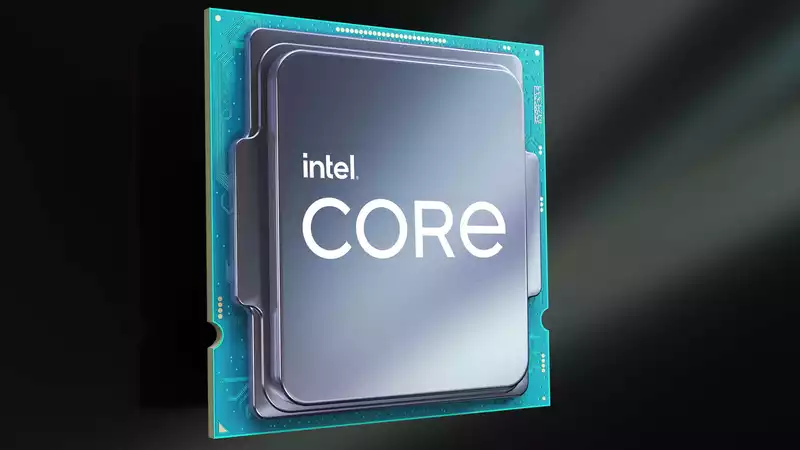The bullish Intel CES press conference finally made official what has been leaked for months: the 14nm backport of the 10nm CPU architecture is finally coming to our desktops in the first quarter of this year.
The 14nm Intel Rocket Lake chips, featuring the new Cypress Cove design, use the same essential chip design as the 10th generation range of 10nm Ice Lake mobile processors. We do not know exactly when the new chips will be available, but they will be available by the end of March, which is the end of the quarter. That means by then at the latest.
While the only real "announcement" at Intel's press conference was one of a 35W Tiger Lake-H processor aimed at promoting a new world of ultra-portable gaming laptops, Intel also had a series of new mobile and desktop chips previewed. The full-fat Tiger Lake-H mobile CPUs will help fuel the spring/summer refresh of gaming laptops, which are likely to appear around May or June of this year.
But for us PC gamers, it's definitely the preview of the soon-to-be-released Intel Rocket Lake chip that will spark the most interest. The chip is a strange silicon monstrosity and appears to be a reaction to its own manufacturing failures and a very strong new competitor in the form of AMD's Zen 3-powered CPU.
First, there is the issue of the Cypress Cove backport. This has become a necessary evil as Intel has struggled to get consistent yields in 10nm manufacturing, especially at high core counts. This is a problem that plagues many sectors as well as Intel investors, but for us PC gamers, it will mean that Intel can once again claim to be the fastest gaming processor. After all, isn't that what matters?
The IPC increase of up to 19% is the same as the Ice Lake chips offered for their 9th generation counterparts, and despite the fact that the top-of-the-line Core i9 11900K chip is limited to 8 cores, it is clearly faster in games than the Intel i9 10900K This means that it is faster. In fact, a demonstration of "Hitman 3" running side-by-side on a Rocket Lake and Comet Lake system showed that the frame rate numbers were very much in favor of the new chip. [But this shift in core count seems a bit of a problem, and no matter how much Intel wants to talk about its focus on maximum real-world performance, it would be hard to suggest that the shift from Comet Lake's 10 cores to Rocket Lake's 8 cores is anything but a regression . But it makes sense: In a pre-briefing with Intel's Brant Gutridge prior to the announcement at CES, he acknowledged that the step down was purely about the number of 14nm cores that could be squeezed onto a die, given the advanced core architecture.
Personally, I would be fine with eliminating integrated graphics even if Intel were to include the new Xe GPU technology in its Rocket Lake chips. Whatever the 50% increase in GPU performance with silicon, we intend to put discrete GPUs in these gaming chips, and if we can replace the processor graphics with a few other cores from Cypress Cove, I'm sure we will.
Intel did not answer my question as to whether that would be possible. Maybe it will be released at a later date: ...... I doubt it will be.
However, the integrated CPU does have one advantage not seen before: always-on quick sync. Previously, the processor's graphics had to be turned on to enable Intel's dedicated media encoder/decoder silicon, but with Rocket Lake, it is always available. This means that when gaming and recording/streaming at the same time, the load on the GPU and CPU itself can be reduced.
Intel did not elaborate on whether or not any performance gains can be expected from Always On Quick Sync, but we expect more details to be revealed in the near future.
The new Intel Rocket Lake platform with 500 series motherboard chipsets is the first desktop to fully support PCIe 4.0, providing a total of 20 lanes directly from the CPU itself. That means x16 PCIe sockets for graphics cards and x4 lanes for shiny new PCIe 4.0 SSDs.
Intel has also improved Rocket Lake's memory compatibility to DDR4-3200 from Comet Lake's DDR4-2933. This should allow for higher memory configurations in new Intel gaming rigs.
However, since it is clear that what matters most to us is actual gaming performance, Intel has provided some initial numbers. These are from Intel's own testing, so take them with as much sodium chloride as you like until we do our own testing on our own setup. Still, overall, Intel claims a performance victory over AMD's Ryzen 9 5900X, albeit by a small percentage.
It is also worth pointing out that these numbers were measured at 1080p, where Intel's Nvidia RTX 3080 would be kicking up its heels leisurely, so the performance difference is likely to be this large. $500 CPU and $700 GPU. running at 1080p or higher would probably not see the performance difference between AMD and Intel.
However, pricing will be interesting for Rocket Lake. Can they really price an 8-core i9 11900K the same as a 10-core i9 10900K? The 12-core Ryzen 9 5900X in particular is an incredibly attractive chip. [If the Rocket Lake chips far outstrip AMD's Zen 3 CPU inventory and are available at competitive prices, Intel will have its own manufacturing facilities to thank.
.

Comments